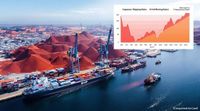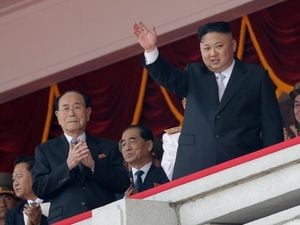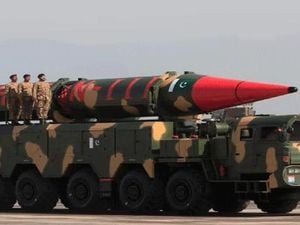Prime Minister Anthony Albanese called it "disappointing." Treasurer Jim Chalmers described it as "concerning." But for Australia’s mining sector, China’s decision in early October 2025 to suspend new purchases of BHP’s dollar-denominated iron ore cargoes is much more than a diplomatic spat—it’s a warning shot that could reshape the global iron ore market and the fortunes of both nations.
The move, orchestrated by the China Mineral Resources Group (CMRG), came as a surprise to many, even though signs of tension had been building for months. CMRG, a state-owned entity established in 2022 to consolidate China’s iron ore purchasing power, instructed domestic steelmakers to halt all new purchases of BHP’s cargoes. This ban didn’t just affect future contracts; it also covered shipments already en route from Australian ports. According to reporting from Colitco, the only BHP iron ore still tradable in China was that which had already landed.
The timing was anything but accidental. The ban was imposed during China’s Golden Week holiday, a period when trading activity naturally slows down. Industry analysts, as cited in Colitco, believe this was a calculated move to maximize negotiating leverage with BHP while markets were quiet. Negotiations are expected to continue until at least October 8, 2025, when China’s holiday period ends, with both sides under pressure to find common ground.
At the heart of this dispute lies a complex web of commercial and strategic interests. BHP is no small player—it supplies roughly 13% of China’s iron ore imports, or about 250 million tonnes annually, according to Colitco and Discovery Alert. For China, which imported $79.64 billion worth of Australian iron ore in 2024 (about 60% of its total iron ore imports), BHP is a cornerstone supplier. For Australia, the stakes are even higher: iron ore accounted for $138 billion in export earnings in 2023-24, with China alone responsible for about $115 billion of that total.
The market’s initial reaction was muted—BHP shares dipped just 1.1%—but the underlying message was clear. As Western Australia Premier Roger Cook put it, this is “strategic gamesmanship,” with China flexing its muscle to secure better pricing terms and test Australia’s economic resilience. According to Colitco, the episode exposes the fragile economics underpinning Australia’s most valuable export relationship and highlights China’s quest for greater control over its supply chains.
China’s creation of CMRG represents a broader strategic shift. Beijing’s goal is to centralize purchasing, drive down prices, and reduce its reliance on any single supplier—especially Australia. The ban on BHP is just the latest in a series of moves to assert control. As Discovery Alert notes, CMRG has gradually expanded its influence, targeting not just BHP but also other major suppliers like Brazil’s Vale.
But the impact isn’t limited to mining companies and steelmakers. The ban sent shockwaves through global shipping markets. Capesize bulk carrier rates, which are heavily dependent on the Australia-China iron ore trade, plummeted by 25% in a single week, including a dramatic 12.5% drop in one day—the largest since June 2025. The Baltic Exchange’s 5TC index, a key measure of global dry-bulk shipping, tumbled to its lowest level since late August, with Singapore-based freight analyst Lennon Lim describing the fallout as "carnage." According to Discovery Alert, some vessels even halted in the South China Sea or slowed down, waiting for clarity on whether their cargoes would be accepted in China.
The roots of this confrontation go deeper than just pricing. China’s dependence on Australian iron ore is a strategic vulnerability, one it has been working to address for years. While Australia’s Pilbara region dominates global supply, China has invested heavily in new sources, most notably Guinea’s Simandou deposit, which is expected to start shipping high-grade ore (65-66% iron content) in November 2025. Simandou, a joint venture involving Rio Tinto and Chinese state-owned firms, could eventually produce 200 million tonnes annually, giving China a powerful alternative to Australian supply.
Brazil is also ramping up production, with Vale planning to add 50 million tonnes to the market over the next two years. Meanwhile, Australia’s own new project at Onslow is set to provide 35 million tonnes annually. The upshot? The global iron ore market is heading for a supply surge, with Macquarie Bank forecasting a surplus of 200 million tonnes over 2026-2028 and prices potentially falling into the US$60-70 per tonne range by decade’s end, according to Colitco.
Australia’s Department of Industry, Science and Resources projects iron ore prices will drop from around US$100 per tonne currently to US$76 by 2026, slashing export earnings from $138 billion to $96 billion—a staggering $42 billion revenue drop in just two years. The Commonwealth Bank of Australia projects a long-term price of US$68 per tonne. While major miners like BHP and Rio Tinto can still turn a profit with production costs around US$10-15 per tonne, the reduced revenues will hit government budgets hard, especially in Western Australia.
There’s another, even more existential challenge on the horizon: the green steel revolution. Nearly 100 million tonnes of new Direct Reduction Iron (DRI) capacity are under construction worldwide, favoring higher-grade ore suitable for low-carbon steelmaking. Here’s the catch: only about 5% of current seaborne iron ore meets DRI specifications, and 95% of Australia’s output is hematite, which requires further processing to be used in DRI. Australia does have significant magnetite resources (about 40% of its reserves), but tapping into these will require massive investment and time. Projects like the NeoSmelt collaboration between Rio Tinto, BHP, and BlueScope aim to bridge this gap, but for now, Australia’s competitive edge in traditional steelmaking is under threat.
So, can Australia find new markets if China pulls back? The answer, for now, is sobering. Japan and South Korea together import about 75 million tonnes of Australian iron ore annually—less than 15% of what China buys. India is largely self-sufficient, and while Southeast Asia offers growth potential, it’s nowhere near enough to offset a major decline in Chinese demand. As Colitco points out, the economic geography is stark: no other market matches China’s scale or logistics efficiency.
For investors, the picture is mixed. Major miners are well-positioned to weather lower prices thanks to their low costs, but earnings and dividends will inevitably shrink. Junior miners and explorers face a tougher road, with projects that were viable at US$100 per tonne now looking shaky at US$70-75. The transition to green steel could open opportunities for magnetite producers and technology innovators, but it’s a race against time and global competition.
What happens next? Several scenarios are possible. The most likely is a near-term resolution, with BHP and CMRG striking a deal on pricing and the ban being lifted—mutual dependence is still strong. A prolonged standoff could see China accelerating its diversification efforts while Australian miners scramble for new buyers. A broader escalation could trigger trade tensions beyond iron ore, with unpredictable consequences for both economies.
One thing is certain: the iron ore trade that built modern Australia is facing its sternest test. As Prime Minister Albanese acknowledged, maintaining access to Chinese markets while navigating a shifting global landscape is a delicate balancing act. With pricing pressures, technological change, and geopolitical rivalry all in play, Australia’s mining sector—and the nation’s economy—must adapt quickly or risk losing their hard-won prosperity.




